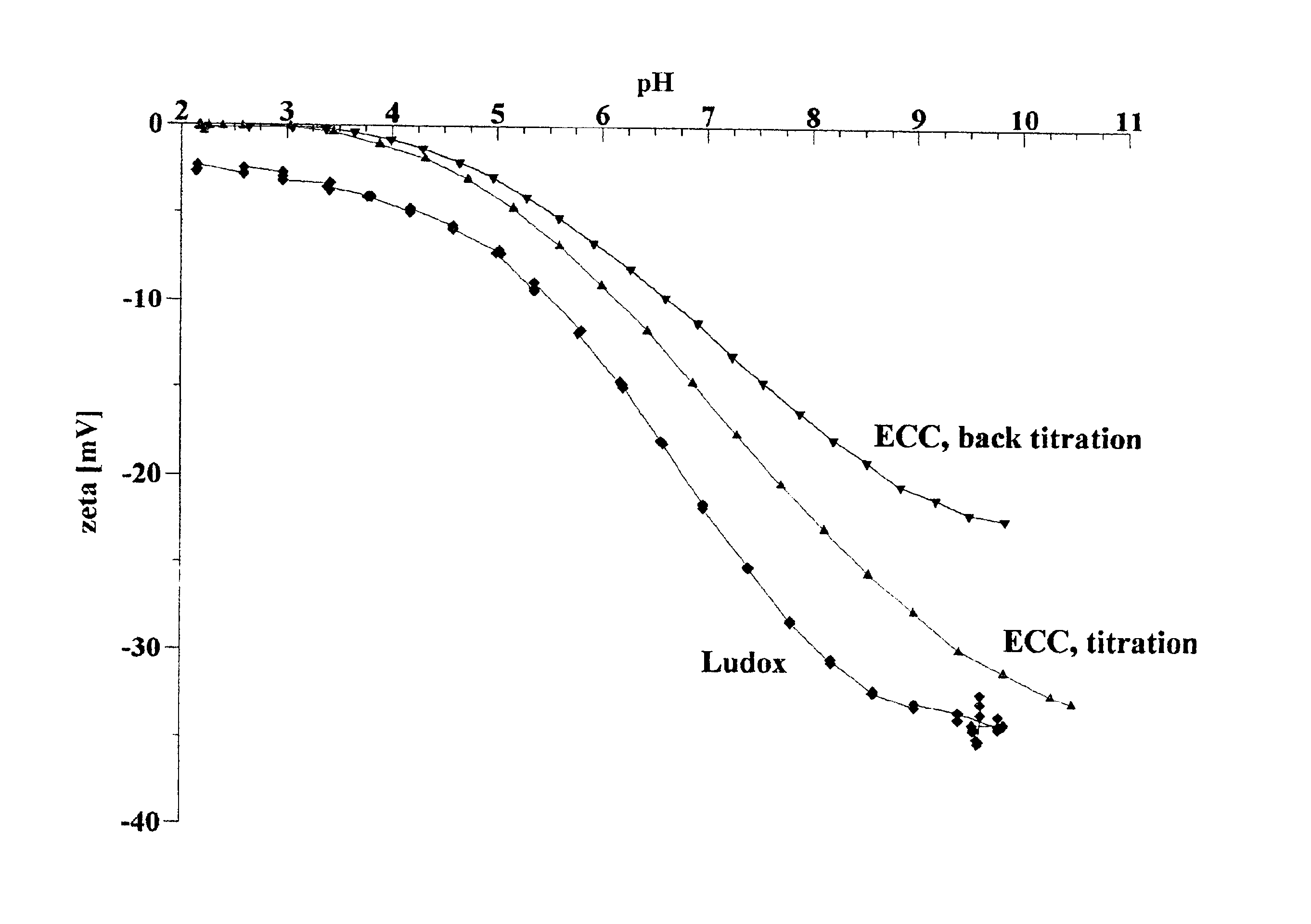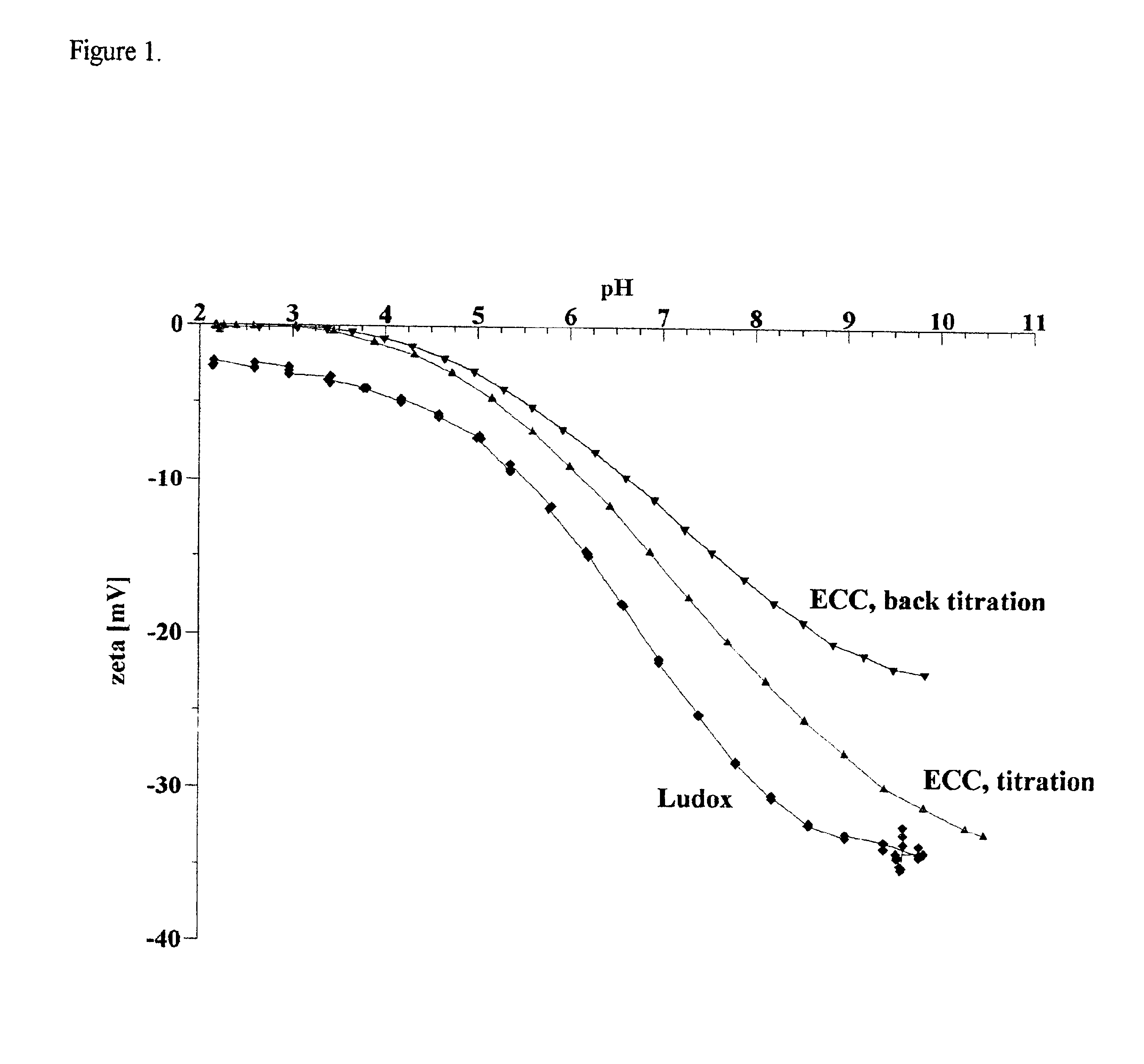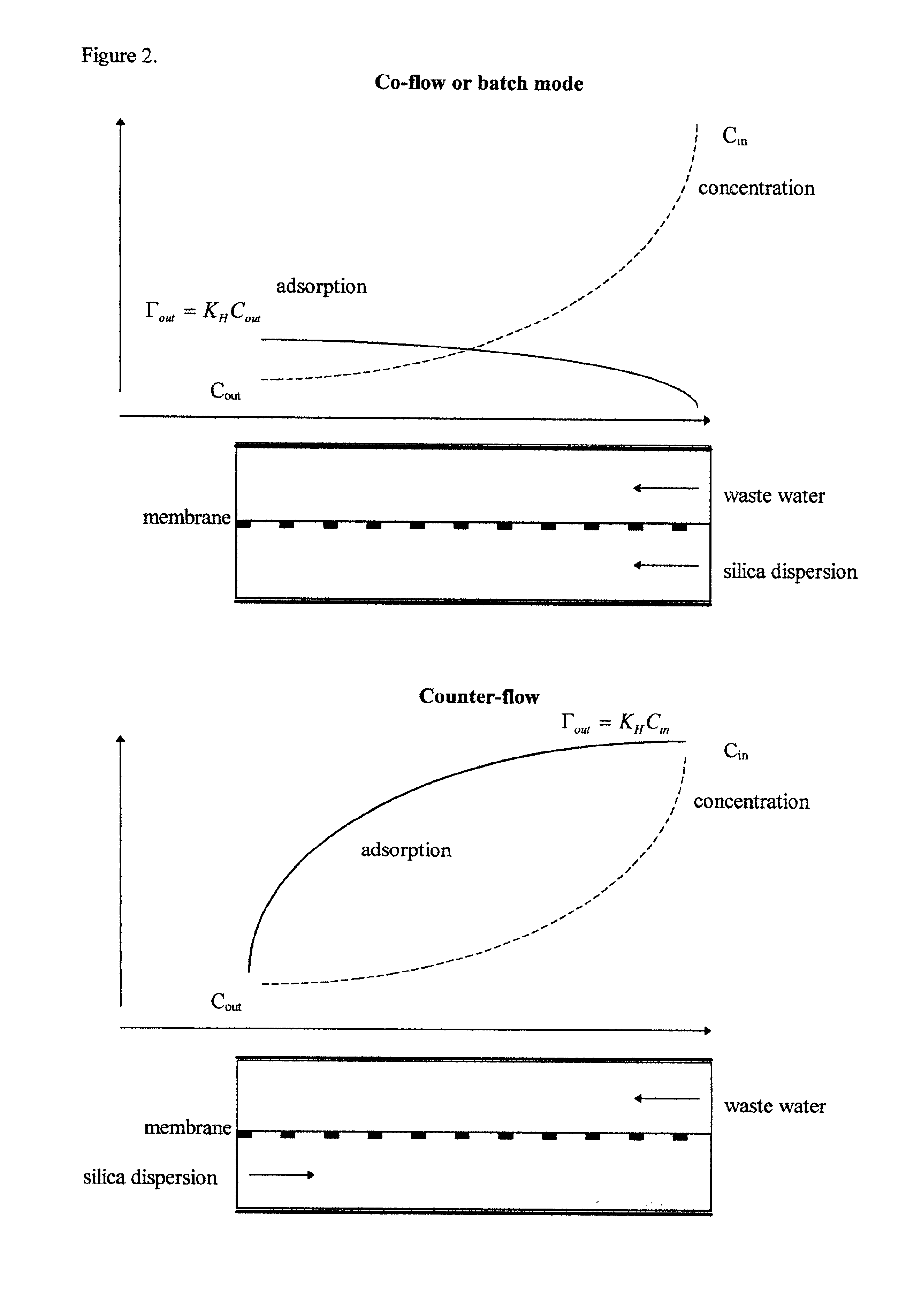Method for the removal of heavy metals from aqueous solution by means of silica as an adsorbent in counter-flow selective dialysis
a technology of heavy metals and adsorbents, which is applied in the direction of separation processes, radioactive contaminants, silicon compounds, etc., can solve the problems of chem 4 being too expensive for large volumes of wastewater, and considerably more expensive than ludox silica, and achieve the effect of preventing colloidal silica solidification
- Summary
- Abstract
- Description
- Claims
- Application Information
AI Technical Summary
Problems solved by technology
Method used
Image
Examples
Embodiment Construction
This invention suggests a new process for treating waste water contaminated with heavy metals, singly or in combination. As used herein, the term “heavy metals” includes various heavy metals ions, alkali and alkaline earth metals, radioactive ions; such as ferric and aluminum ions, uranium, thorium, lead, mercury, copper, cesium, barium, and cadmium. It is also suitable for removal of radium, arsenic, boron, chromium, silver, selenium, beryllium, nickel, antimony, molybdenum, vanadium, zinc, thallium, strontium, cobalt, plutonium and the like
As used herein, the term “waste water” includes all forms of solutions in which contaminates may be found, such as, for example, groundwater, drinking water, soil washing extractants, leachates, effluents, waste water streams from nuclear fuel handling / manufacturing facilities, and mining facilities.
It is well known that heavy metals dissolved in water have a high affinity to silica surfaces. The term “silica” as used herein, is associated with ...
PUM
| Property | Measurement | Unit |
|---|---|---|
| sizes | aaaaa | aaaaa |
| volume fraction | aaaaa | aaaaa |
| size | aaaaa | aaaaa |
Abstract
Description
Claims
Application Information
 Login to View More
Login to View More - R&D
- Intellectual Property
- Life Sciences
- Materials
- Tech Scout
- Unparalleled Data Quality
- Higher Quality Content
- 60% Fewer Hallucinations
Browse by: Latest US Patents, China's latest patents, Technical Efficacy Thesaurus, Application Domain, Technology Topic, Popular Technical Reports.
© 2025 PatSnap. All rights reserved.Legal|Privacy policy|Modern Slavery Act Transparency Statement|Sitemap|About US| Contact US: help@patsnap.com



